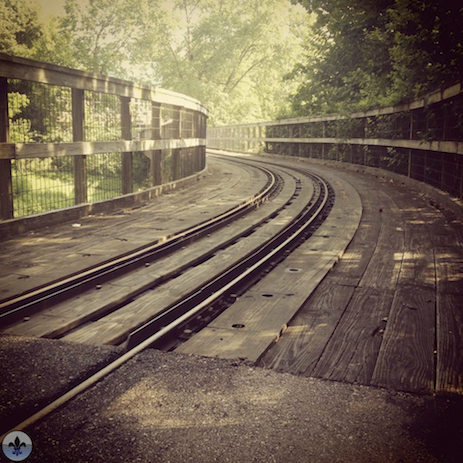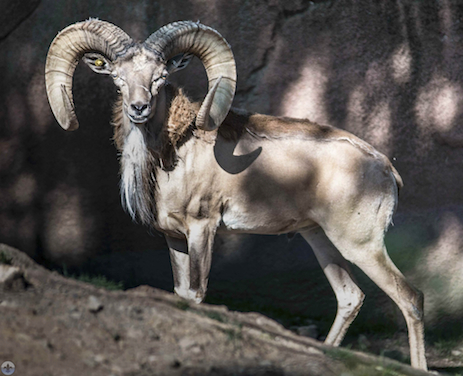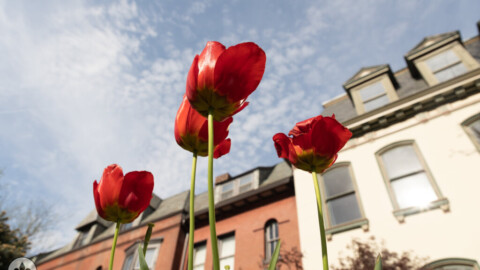photograph by Steph James
The century-old, St. Louis Zoo is generally considered one of the best zoological parks in the country, frequently ranking in the top ten on lists which measure such things. The Zoo has over 17,000 exotic animals in its collection, features significant historical structures such as the Aviary (dating to the 1904 World’s Fair), and, like the Saint Louis Art Museum, Science Center, and History Museum, it’s free to enter!
photograph by Mandi Gray
photograph by Jeni Kulka
photograph by Amanda Krebel
photograph by Dan Henrichs Photography, St. Louis
At the beginning of the 20th century, St. Louis was a city in transition. It had survived the Civil War virtually unscathed, and had, by this time, succeeded in cementing its place as a prominent producer of goods, for the country and the world. That said, St. Louis was experiencing something of an identity crisis; it had lost the campaign to have the District of Columbia relocated there, had lost a bid to control the central connections to the transcontinental railroad, and had lost much of its political and manufacturing clout to Chicago. Internally, the newly established Forest Park, and the influx of German and Irish immigrants, spurred development in directions away from the older, more established neighborhoods of the city (like Lafayette Square) to newer, more fashionable areas (like the Central West End). However, the city was still among the nation’s largest, and a period of transition meant that it was uniquely open to grand gestures. In 1904, St. Louis hosted both the The Louisiana Purchase Exposition (the World’s Fair) and the first Olympic Games to be held in the United States of America. The impression of these events on the city were significant and lasting.
photograph by Jason Gray
photograph by Kristy Bertelsman
photograph by Theresa Harter
For the World’s Fair, the Smithsonian Institution in Washington, D.C. had commissioned a massive aviary, or walkthrough flight cage, to place U.S. birds on display for the international audience. When the Fair concluded, the people of St. Louis, enthralled by the attraction, campaigned to keep the structure on site, which became a fundament of the future zoological park now encircling it. By 1910, many cities in the U.S. had zoos, including St. Louis (at Fairground Park in north St. Louis), but civic leaders felt it important that the city be a pioneer in establishing a larger, more impressive zoologic institution that would be the envy of all others; upon this notion, the Zoological Society of St. Louis was formed. However, deciding where to put the new Zoo was more complex than deciding to build one. Supporters for Creve Coeur Lake, Carondelet Park, and Fairground Park all argued for the Zoo to be established at their location, but the Zoological Society correctly saw Forest Park as the choicest spot. Still, constructing the St. Louis Zoo in Forest Park was not without its challengers, namely Dwight Davis (tennis champion, namesake of the Davis Cup, and then St. Louis Parks Commissioner).
Davis was well known for making all of the city’s parks accessible to all of the city’s residents, an example of which being his famous removal of all of the “Keep off the Grass” signs. His sentiments helped set precedent for the organized municipal use of public parks throughout the country. He saw the Zoo as an affront to Forest Park’s purpose as a natural refuge within the city, and opposed the construction of zoo buildings and enclosures on land then covered by forest. Eventually, he was won out by city leaders, and the St. Louis Zoo was established in St. Louis’ largest urban park.
photograph by Kristy Bertelsman
photograph by Dan Henrichs Photography, St. Louis
photograph by Jeni Kulka
photograph by Jeni Kulka
The Zoo’s website lists its early objectives that were published in a booklet distributed to the people of St. Louis. These include:
i. To establish and to co-operate with the City of St. Louis in maintaining a Zoological Park for the instruction and recreation of the people.
ii. To exhibit wild animals under favorable conditions.
iii. To encourage Zoological Research.
iv. To increase public interest in wild animals.
v. To secure better protection of wild animal life, by educational methods.
In over 100 years of service, the institution has never wavered from these core values, and continues to represent them to the highest available standard.
During this history, the St. Louis Zoo achieved many spectacular accomplishments. Among them, its Bear Pits (built in 1921 and cast from Mississippi River rock formations), became a model for such enclosures throughout the world. Famous Zoo residents have included Mrs. Jim the elephant, Siegfried the walrus, Blondie the albino python, and Phil the gorilla (featured in a Life magazine photo-spread); drawing on this, the Zoo welcomed thousands of visitors to their public feedings and other interactions, a practice which continues today with the Sea Lion Show, Stingray Cove and the Children’s Zoo. In 1963, then St. Louis Zoo Director, Marlin Perkins expanded the Park’s reputation by hosting the popular television program, Mutual of Omaha’s Wild Kingdom. In the 1920’s, several buildings were added, including a Primate House and Herpetarium. Designed by John E. Wallace, they feature a Spanish influence and spectacular sculptural ornamentation, as well as hand-painted murals. If these structures existed outside of the Zoo, they would be worthy of attention all on their own.
photograph by Jason Gray
photograph by Dan Henrichs Photography, St. Louis
photograph by Kristy Bertelsman
Today, the St. Louis Zoo features many immersive displays that are both innovative and harmonious with the Park’s mission. Parents Magazine, The Huffington Post, and Zagat Survey (among others) all position the Zoo within the top ten American zoological parks. Additionally, the Zoo has won several prestigious awards for its animal conservation and education programs. Plans are currently in the works for the institution to open a preschool with programs dedicated to the appreciation of nature, an assurance, if one is needed, that the Zoo’s objectives be carried through to future generations of St. Louisans willing to support its call.
photograph by Jason Gray
photograph by Theresa Harter
photograph by Dan Henrichs Photography, St. Louis
photograph by Jo Kulka
photograph by Jeni Kulka





























[…] Palace of Fine Arts Building (now the Saint Louis Art Museum), The Aviary (now a cornerstone of the St. Louis Zoo), and the statue, The Apotheosis of St. Louis (which was cast in bronze and gifted to the City). […]
[…] space is one of the largest urban parks in the country, and hosts many attractions including the St. Louis Zoo, Saint Louis Art Museum, Missouri History Museum, The Muny (a municipal theatre), and Shakespeare […]
[…] by an undulating stone wall. The name is essentially urban lore owing to the origin of the St. Louis Zoo. When the St. Louis Zoological Society was established in 1910, St. Louis already had a small zoo […]
[…] points of origin, including Yellowstone National Park for the elk, the State of Oklahoma and the St. Louis Zoo for the buffalo, and Grant’s Farm for the deer. Today, the populations are mostly […]